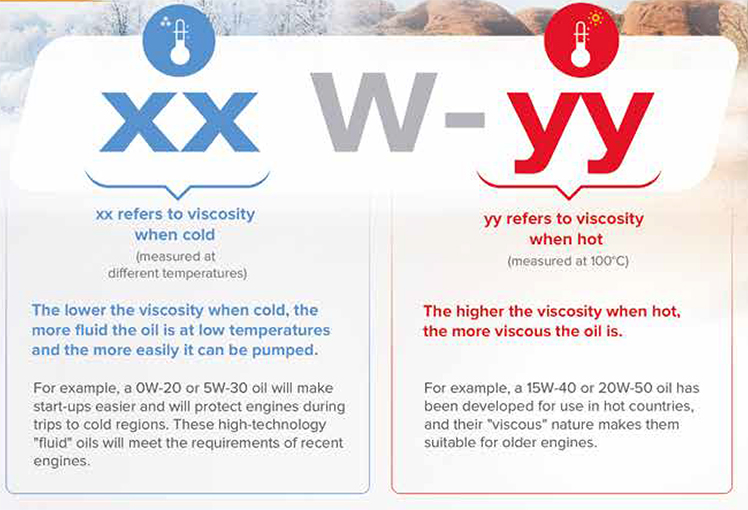
Very simply, the higher the number, the thicker the oil, but you will notice that a majority (if not all) options at your local store have two numbers and a letter, so what’s that about? The number on the bottle is the oil’s Society of Automotive Engineers (SAE) standard viscosity rating or ‘weight’. That’s a potential temperature range of below zero to in excess of 100 degrees and this is where the numbers come in. For more information on oil viscosity, chat with a knowledgeable expert at your local NAPA AUTO PARTS store.The motor oil in your car has a critical role to perform and just seconds without the lifeblood of the engine will spell disaster, so checking the level and condition should be at the top of your regular check list as well as making sure you are using the correct grade.Ī DIY oil and filter change or a simple top up is a good way to avoid a trip to the mechanic and will save you money, but what is the correct oil for your car and what do all the brands and numbers mean?Įngine oil may not be the most glamorous automotive ingredient but it is an unsung hero and must cope with punishing temperatures from a stone-cold start in the dead of winter to heavy load driving in the height of summer. SAE 0W-20 is compatible with a SAE 5W-20).Ĭheck out all the chemical products available on NAPA Online or trust one of our 17,000 NAPA AutoCare locations for routine maintenance and repairs. However, if you live in an extremely cold climate or just want better fuel economy, you can use a “0W” viscosity grade while keeping the recommended operating temperature viscosity grade (the second number) the same (e.g.
#Explain oil viscosity numbers manual#
In summary, ALWAYS follow the vehicle owner’s manual to determine the correct viscosity grade, engine oil specification, and oil drain interval.
#Explain oil viscosity numbers full#
And remember that viscosity measurement rules are the same whether you choose a normal conventional motor oil, or a high tech natural gas derived full synthetic motor oil like Pennzoil Platinum. Lower viscosity “0W” oils can also help provide better fuel economy, because it is easier for an engine to pump a thinner oil. If your car calls for a 5W-30 or a 10W-30, but you live in an extremely cold climate, then you can use a 0W-30 choosing a “0W” means the oil will still pump at -40☏, and the “30” means the oil will provide the same high temperature viscosity. The number preceding the W indicates the lubricant’s viscosity grade when operating at extremely cold temperatures. That W stands for “winter” and is a shorthand that tells you that you’re dealing with a multigrade oil that’s been tested to pump at extremely cold temperatures. You might have noticed that there are far more bottles of oil with a “W” on the label than there are with just a single SAE number.


This is why multigrade oil viscosity is the standard in the industry. It’s crucial that oil flows just as well when you first crank the ignition as it does when the vehicle is warmed up, otherwise there’s a risk of damaging internal components. Sometimes it gets much colder than room temperature - particularly during the winter months when the thermometer can plunge well below freezing. When you see an oil that’s rated SAE 30, this translates into an engine oil that has a viscosity between 9.3 cSt and 12.5 cSt at 212 degrees F. For example, an A is a 90-100, a B is an 80-89, etc. A viscosity “grade” is just like a grade in school that denotes a range of numbers. It is the operating temperature viscosity that is most important. The SAE defines high temperature oil viscosity at 212 degrees Fahrenheit (which is 100 degrees Celsius), which is the baseline used to approximate the operating temperatures of most vehicles. It wouldn’t make much sense to rate engine oil flow at room temperature - after all, it gets really, really hot inside your engine, and that’s where it’s crucial that oil flows as efficiently as possible for a given engine’s design requirements. Sometimes, viscosity is also referred to as an oil’s “weight,” with a heavier oil featuring a higher viscosity grade. It’s logical to assume that a low viscosity oil is thinner than a high viscosity oil. High viscosity oils flow more slowly and come with a higher SAE number.


The quicker an oil flows, the lower its viscosity and the grade assigned to it by the Society of Automotive Engineers (SAE). In the simplest terms, viscosity refers to how well a lubricant flows at a given temperature. In fact, you should ALWAYS follow the vehicle owner’s manual to determine the correct viscosity grade, engine oil specification, and oil drain interval. To make it simple, just pick up the oil type that’s recommended in your owner’s manual. Oil viscosity can feel a bit like math class when you’re standing inside your local auto parts store staring down row after row of oil bottles plastered with algebraic numbers and letters.


 0 kommentar(er)
0 kommentar(er)
